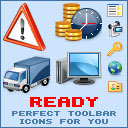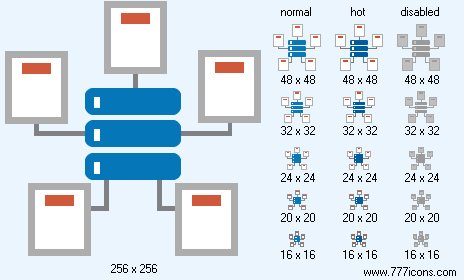


|
| ||||||||
|
|
Data Warehouse Icon |
|
Image sizes: 512x512, 256x256, 64x64, 48x48, 32x32, 24x24, 20x20, 16x16
File formats: BMP, GIF, PNG, ICO
Download Windows 7 Icons
Windows 7 went gold! Ensure compatibility of your applications, download Windows 7 icons and see if you implemented the style the right way in your software or Web sites.Windows 7 is out! The exciting new features, improved performance and revamped looks of the new OS will sure make it a killer system. However, the new looks mean updated graphics, new images and icons used throughout Windows 7 tools and utilities. What will this mean for you as a developer or a webmaster?
To ensure your applications look up to date and in line with Windows 7, you need to update their graphical style with new icons. Fortunately, Windows 7 icons are no different from icons used in Windows Vista. This time around, Microsoft has decided to stick with the style thatís proven successful with the users. Regardless of the same style chosen for Windows 7 icons, there are many new images available in Windows 7 that were not there in the older systems.
A group of developers at standardicons.com has taken the challenge to extract and collect many icons from the many utilities, tools, and DLLs found in Windows 7 and publish them online. Now, you can download Windows 7 icons to ensure your products look modern by matching their style against the style used in Windows 7 icons.
In order to create the complete collection Windows 7 icons, a special tool was used to scan all executable files and resource libraries found in Windows 7 in order to locate and extract all available Windows 7 icons. After that, the icons were checked for duplicates, with repeating Windows 7 icons removed, and only one copy of each image left. The remaining Windows 7 icons were stored in a library of 430 Windows 7 icons, which is now made available to everyone for free download.
To ensure compatibility of your products, download Windows 7 icons and check them out. Download Windows 7 icons free and make sure youíve done the style right in your software or Web sites!
Technically, you are getting icons drawn and owned by Microsoft and used in Windows 7. The set of downloadable Windows 7 icons contains 430 Windows 7 icons in resolutions of 256x256, 64x64, 48x48, 32x32, and 16x16 pixels. All Windows 7 icons are available for free download in Windows ICO and PNG formats. Download Windows 7 icons free of charge from www.standardicons.com!
Copyright © 2006-2022 Aha-Soft. All rights reserved.
|

